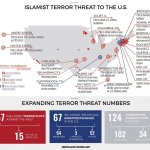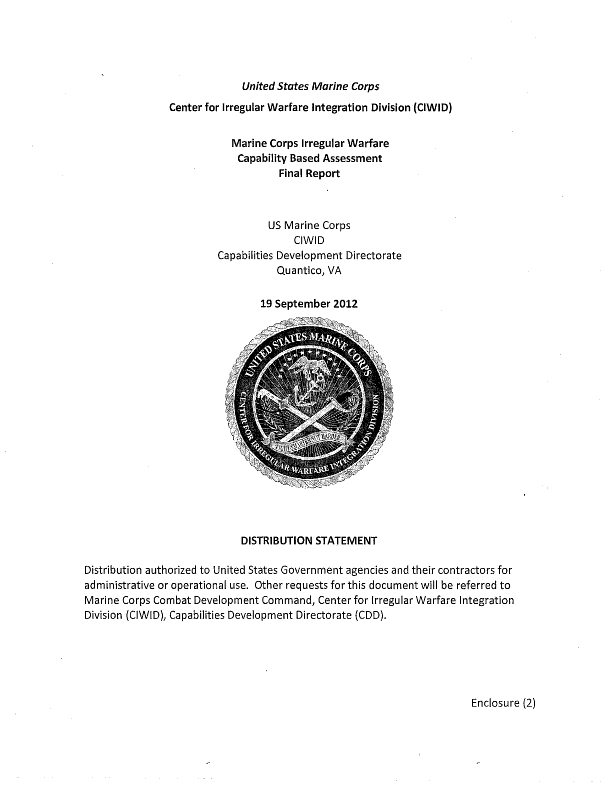Both Barack Obama and John Kerry are suffering from all the symptoms of vertigo, the spinning of lies, the dizziness of power and the imbalance of a lopsided deal with Iran over the nuclear program.
On September 8, 2015, Former Vice President Dick Cheney spoke at the American Enterprise Institute on the notable terror history and chilling consequences of an Iran deal.
Let us examine some facts with regard to Iran and how the negotiation table was a long flawed dialogue from the start.
During the uprising and war in Yemen last March, the Houthis, an Iranian terror proxy took at least 4 Americans hostage. The State Department chose to keep this a secret during the Iranian talks. It is rumored that 1 hostage has been released, while the conditions of the remaining hostages is unknown. Couple this basis with the 4 Americans jailed in Iran. Yet, no efforts have been forthcoming to ensure Iran releases any of them.
Jeddah, Sana’a and Riyadh, Asharq Al-Awsat—The Iranian embassy in Yemen’s capital Sana’a is offering financial, strategic, and military advisory support to the Houthi rebels in country, Yemen’s Foreign Minister Riyadh Yassin said on Sunday.
Speaking to Asharq Al-Awsat, Yassin said Iran’s embassy in Sana’a had become a “Houthi operations room” and that Iranian intelligence and military experts at the embassy were helping the Houthis plan attacks against government loyalists and forces from the Saudi-led coalition targeting the group.
He added that the embassy is “equipped with resources not even the Yemeni government is in possession of” and that it was also being used to distribute financial support to the Houthi militias currently stationed in different parts of the country.
The Shi’ite Houthis, backed by Iran and Yemen’s ousted former president Ali Abdullah Saleh, occupied Sana’a in September 2014. They then launched a coup the following February deposing Yemen’s internationally recognized President Abd Rabbuh Mansur Hadi and his government.
Yemeni government loyalist forces and a coalition of Arab counties led by Saudi Arabia are currently engaged in a ground and air offensive against the Houthis, seeking to reinstate Hadi and the government.
On Sunday coalition warplanes bombed several targets in the capital, according to eyewitnesses speaking to Asharq Al-Awsat.
They said over 15 individual strikes were carried out, including several targeting the headquarters of Yemen’s Special Security Forces, who are loyal to ex-president Saleh. The sources said most of the HQ’s compound has now been destroyed following the air raids.
The coalition has announced a plan to retake Sana’a with the aid of government loyalists on the ground, known as the Popular Resistance, to follow gains made in the country’s south which have seen the southern port city of Aden and almost all southern provinces liberated from Houthi control.
The coalition is now closing in on the Houthis in Sana’a and also in the group’s northern stronghold of Saada. The group last month declared a state of emergency in both areas.
Local sources told Asharq Al-Awsat on Sunday the Houthis now have a plan in place in anticipation of the impending attack on the capital.
They said the Houthis plan to “spread a wave of chaos” prior to the entry into the capital of coalition forces and those from the Popular Resistance, which will include assassinations of any figures they deem may cooperate with the latter against them—such as political activists and university professors.
Meanwhile, on Sunday Saudi hospitals received 852 Yemenis injured as a result of the conflict, in a joint initiative between the King Salman Center for Relief and Humanitarian Works and the Ministry of Health.
This comes as the King Salman Center on Saturday launched the second phase of a joint humanitarian relief project with the United Nations, delivering aid worth some 22 million US dollars to help Yemenis caught up in the conflict.
In May Saudi Arabia’s King Salman Bin Abdulaziz increased Saudi Arabia’s aid commitment to Yemen to over half a billion dollars.
Meanwhile, ask any sailor deployed in the region about the daily confrontations with Iran.
Iranian warships confront U.S. Navy on ‘daily basis’
U.S. naval forces operating in and around the Strait of Hormuz, a critical shipping lane, are “routinely approached by Iranian warships and aircraft” on a “nearly daily basis,” according to a Pentagon official familiar with operations in the region.
During these interactions between U.S. and Iranian forces, American aircraft and ships are routinely photographed by the Iranians for intelligence purposes, according to the official, who said that most confrontations between the sides are “conducted in a safe and professional manner.”
The disclosure of these daily run-ins comes following the release of footage by the Iranian military purporting to show a reconnaissance mission over a U.S. aircraft carrier station in the Strait of Hormuz. More here from JihadWatch.
Then comes the Iranian Parchin nuclear plant which has been a historical military dimension location going back as far as the Nazi regime that used it for the production of chemical weapons. Today, Iran has declared this location will never be subject to any inspections. Related information on Parchin and images taken from space, click here.
“Parchin is a conventional military site. The construction there is normal and even it was indeed confirmed by some officials from the United States that Parchin site and the activities there are something normal and it doesn’t have any relevance to the IAEA work,” Iran’s Ambassador to IAEA Reza Najafi said.
“Of course, this is a military site and Iran will not let any inspector go there,” he added.
Najafi’s remarks came after IAEA Director General Yukiya Amano repeated his claims about construction work at Iran’s Parchin military site whose inspection some world powers demand.
“These activities could undermine the capability of the IAEA on verification but as we do not have inspectors there and by way of observing through satellite imagery, we do not have further insight of these recent activities,” the IAEA chief said.
He added that “much work needs to be done” to finish the probe, but reiterated that the investigations will be complete by mid-December, as agreed in a roadmap between Iran and the IAEA.
On July 14, Iran and the IAEA signed a roadmap for “the clarification of past and present issues” regarding Iran’s nuclear program in Vienna, Austria.
Iran provided some additional information on Parchin by August 15, further proving that it was complying with the mutual agreement with the UN agency.
On August 27, the US Department of State acknowledged that Iran’s Parchin site is a “conventional” military facility. “I think it’s important to remember that when you’re talking about a site like Parchin, you’re talking about a conventional military site, not a nuclear site,” US State Department spokesman John Kirby said.
“So there wouldn’t be any IAEA or other restrictions on new construction at that site were they to occur,” he added.
Kirby’s remarks mark a deviation from past claims in the US about Parchin. Iran has repeatedly denied Western allegations about nuclear activity at the site. The comments came after the IAEA voiced reservation about the construction of “a small extension to an existing building” at Parchin.
“Since (our) previous report (in May), at a particular location at the Parchin site, the agency has continued to observe, through satellite imagery, the presence of vehicles, equipment, and probable construction materials. In addition, a small extension to an existing building appears to have been constructed,” the IAEA report said.
Following the report, Tehran criticized the agency’s statement about Parchin, saying construction work on the site “does not concern” the nuclear agency.







